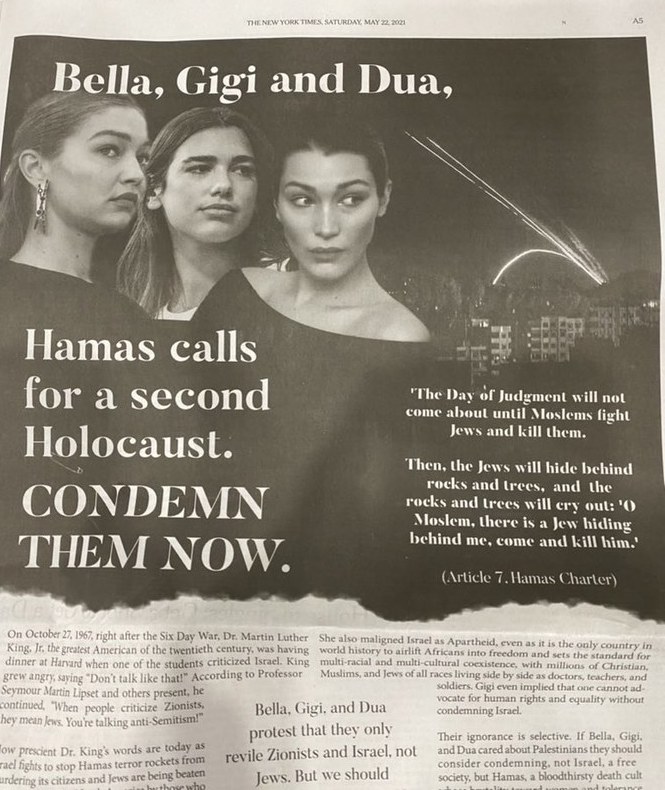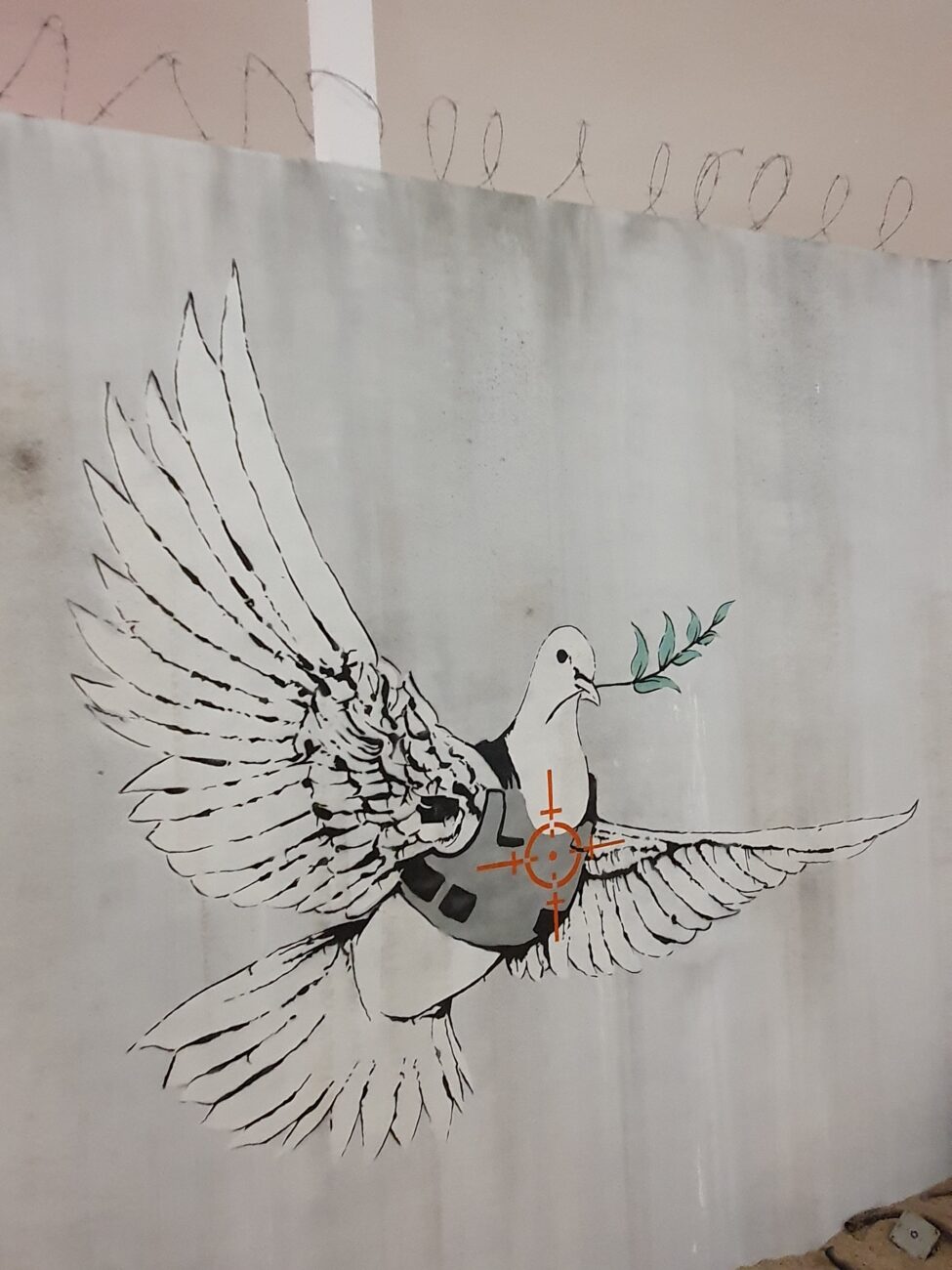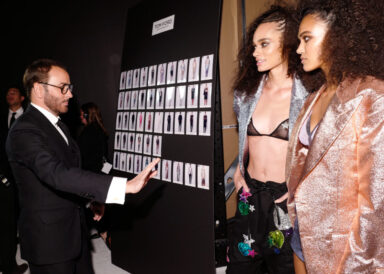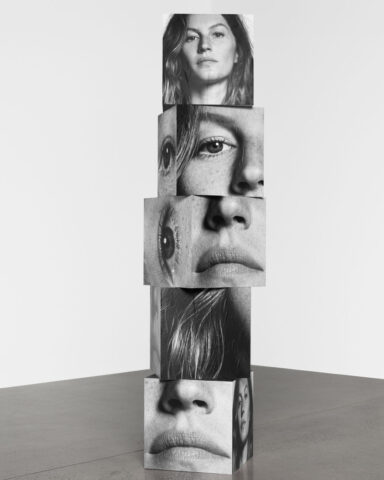Even before the dramatic escalation of violence in the last month, Gigi and Bella Hadid had already transferred the Palestinian issue from the intellectual (or radical) ghettos to the mainstream. From rock to pop. From community centres to Vogue. Their endorsement threw light on an invisible affair and created more than a fissure in the consolidated stigma that confuses Palestinians and terrorists
Words CARLA MONTEFORTE
“The Hadids have opened a gate” said one activist who in the rain of bombs on Gaza has just lost two friends. Two reporters.. A commitment that, in a country that is the Jewish state’s main ally – the United States – the models and influencers have paid with the loss of contracts, social relations and a series of direct attacks from the official social networks of the State of Israel (and from Gal Gadot, the Wonder Woman with the Star of David). In particular, in May 2021 – following the forced evictions of Sheikh Jarrah, the raids on the al-Aqsa mosque during Ramadan and the violent clashes that followed between Israeli forces and Palestinians in the West Bank – the solidarity expressed to the many dead and injured in those events and the condemnation of settlers and segregation earned the daughters of Mohamed Hadid (and the Real Housewife of Beverly Hills Yolanda) a full page in the New York Times bought by advertisers who accused them of anti-Semitism by calling them Hamas influencers. Or by Shmuley Boteach, America’s most famous rabbi according to the Washington Post, among the 10 most influential rabbis in America (according to Newsweek), among the 50 most influential Jews in the world according to the Jerusalem Post. As well as reality TV star.
Also in Boteach’s sights is Dua Lipa, who has been in the pillory of the man who was, among other things Michael Jackson‘s spiritual advisor for supporting the Palestinians.
At the time, the pop star was engaged to Anwar (last son of the Hadid dynasty of Nazareth) but her empathy towards Gaza and the West Bank is perhaps explained more in the singer’s Balkan origins (the Lipa family is from Kosovo whose independence is not universally recognised).

Naming Palestine in America is a problem. So much so that when Gigi decided, declaring it in a lengthy post, to donate the proceeds of the fall 2022 fashion shows to the war-torn Ukraine ‘just as she would continue to support Palestine’, the last part of her post was censored by Vogue, which reported the news in a biased manner. Totally deleting the word Palestine – as activists claim one would want from the maps – showing how taboo this term is in the United States. Or at least it was until then.
The War of the Two Vogue
War affects fashion because crises condition fashion: for example, it makes the transition from maximalism to minimal rigour. It is therefore not surprising that the protagonists of conflicts end up on the covers of glossy magazines, promoted to celebrity status. Also because by becoming social trend topics they become market interest. The covers dedicated to the Ukrainian conflict and the Israeli-Palestinian one, tell more about the differences of these two dramas than a thousand editorials. About communication, legitimisation and perception. Immediately after the invasion of Russia, the Ukrainian president and former comedian Volodymyr Zelensky ended up in Vogue America together with his wife Olena, portrayed by the famous fashion photographer Annie Liebovitz. The First Lady dressed in all the national brands (punctually mentioned in the fashion bible’s captions), the President in what has been his uniform since the beginning of the war, which has made him recognisable and Instagrammable (so much so that it has become a Halloween costume, the highest consecration for a character). Needless to say, how much controversy was stirred up by the choice whose glamour scarcely matched the country’s rubble.
This time not America but Arabia (first difference). The Middle East edition of the magazine paid tribute to the protagonists of Gaza who for obvious reasons are not presidents but doctors and journalists. No leaders then (in this war of civilians you don’t see any as you don’t see armies or leaders), no superstar photographers (in the Strip not even war reporters are not even allowed to enter), no brands (there is no water to drink, let alone designer clothes).
In reality – and this is substantial – those published by Vogue Arabia are not even photographs but portraits (drawings) of civilians who have distinguished themselves for their commitment and dedication, becoming the symbol of this chapter of history or ‘heroes’, a word generally abused by the western media and not yet attached to the courageous lens of Motaz Azaia (one of the protagonists of the report), who has become the eye on Palestine for millions of people who have started following him on IG.
“Vogue Ancora”
Before the Hadids and the ongoing war, the keffiyeh (an accessory symbol of the Palestinian struggle) had already been in Vogue. In the November 2011 issue of the British edition it appeared worn by Tilda Swinton. Needless to say, the choice of the actress and Oscar winner surprised the public, who were divided between controversy and curiosity. “Has a Hollywood actress made Palestine solidarity chic?” was one of the headlines. She dismissed it as follows: ‘It’s just my favourite scarf’. Obviously not a credible argument from an icon whose style, to quote Zac Posen, is impeccable, risky and avant-garde as it incorporates fashion as an art form and design.



